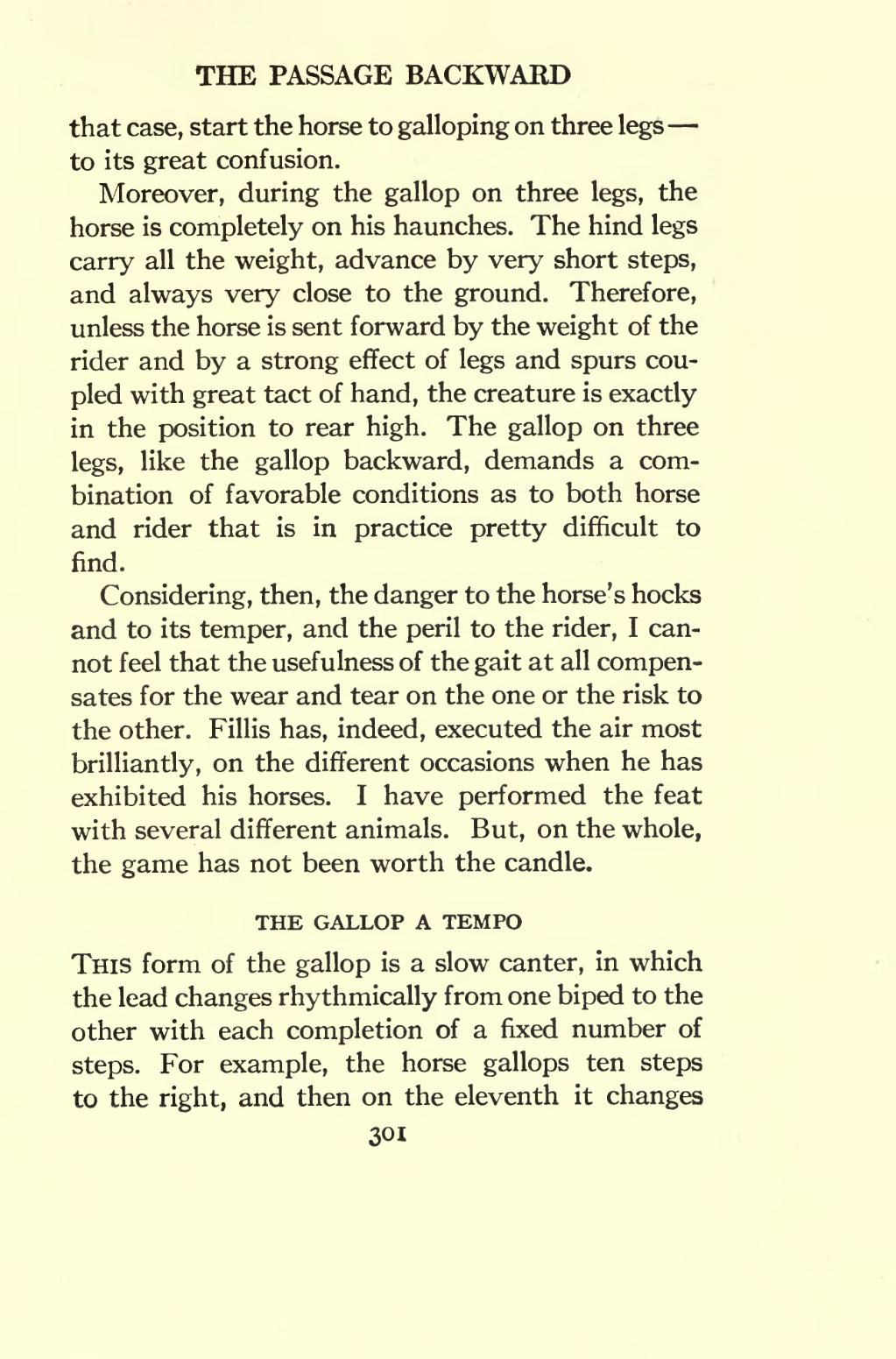that case, start the horse to galloping on three legs — to its great confusion.
Moreover, during the gallop on three legs, the horse is completely on his haunches. The hind legs carry all the weight, advance by very short steps, and always very close to the ground. Therefore, unless the horse is sent forward by the weight of the rider and by a strong effect of legs and spurs coupled with great tact of hand, the creature is exactly in the position to rear high. The gallop on three legs, like the gallop backward, demands a combination of favorable conditions as to both horse and rider that is in practice pretty difficult to find.
Considering, then, the danger to the horse's hocks and to its temper, and the peril to the rider, I cannot feel that the usefulness of the gait at all compensates for the wear and tear on the one or the risk to the other. Fillis has, indeed, executed the air most brilliantly, on the different occasions when he has exhibited his horses. I have performed the feat with several different animals. But, on the whole, the game has not been worth the candle.
THE GALLOP A TEMPO
THIS form of the gallop is a slow canter, in which the lead changes rhythmically from one biped to the other with each completion of a fixed number of steps. For example, the horse gallops ten steps to the right, and then on the eleventh it changes
301
